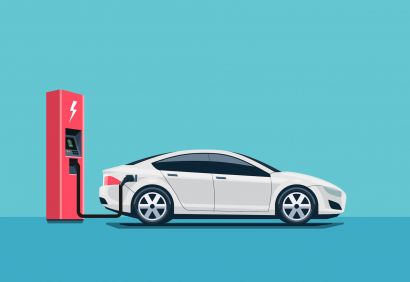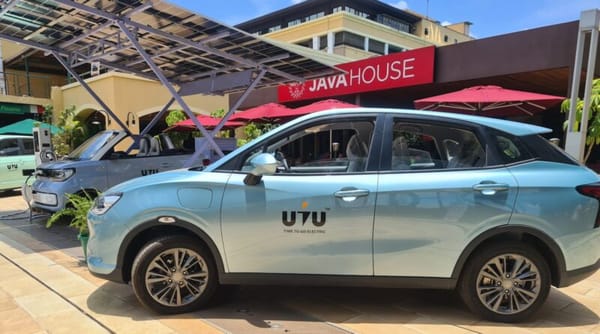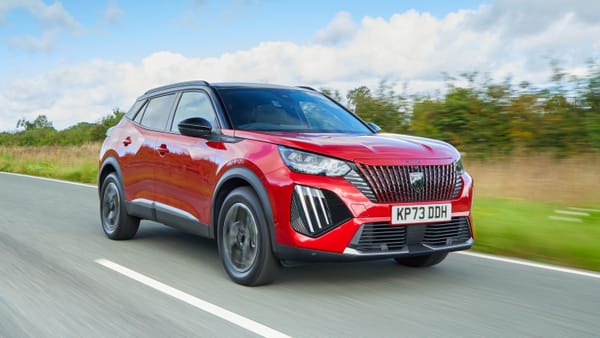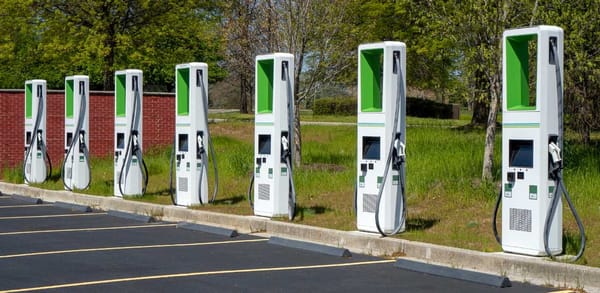Comprehensive Review on Electric Vehicle Charging Infrastructure.
Electric vehicles represent the single most important technology for decarbonizing transportation, so the wide gap in the availability and capacity of charging stations worldwide poses a significant obstacle.


Electric vehicles represent the single most important technology for decarbonizing transportation, so the wide gap in the availability and capacity of charging stations worldwide poses a significant obstacle.
The rollout of electric vehicles will require expansion of existing infrastructure of power generation and transmission and the setting up of charging infrastructure. There will be a need for additional power generation for electric vehicles which is not expected to be very high. However, significant charging infrastructure would be required to be set up, particularly for buses. While charging stations can be located in the bus depots, for other vehicle segments charging stations will need to be set up in apartment complexes, malls, parking garages, workplaces, public buildings, and many more.
Read: Charging Stations in Kenya.
Already some private companies have been building the charging infrastructure for electric vehicles example NCBA Bank in Kenya. Moreover, a strong charging infrastructure may reduce the charging time of the battery. The battery capacity is an important problem for the charging process. Many research works are based on the charging of the electric vehicle in plug-in and wireless charging modes.
See: Google Maps Offers Info on Electric Vehicle Charging Stations.
Corporate entities can opt for semipublic charging infrastructure where one charger is installed in a private area but can be accessed by a multitude of users. Examples are in car parks, company parking areas, and shopping mall parking grounds. Doing this will help fasten the electric vehicle adoption globally. As the absolute gain is still rather small, the infrastructure has to be deployed in a cost-efficient way. Companies, for example, could refrain from billing the electricity to the individual driver to reduce infrastructure costs on the one hand and to incentivize electric mobility on the other hand.
See: More public charge stations for electric cars in Kenya.
Additionally, infrastructure deployment at these places therefore remains primarily a marketing measure to increase the attractiveness. The effect of charging infrastructure at recreational facilities is much higher, but these locations are widespread, and thus installations there would cause high infrastructure costs.
Governments should give support for solving the electric vehicle charging problems to reduce the power demand by implementing microgrids enabling lower-priced charging and providing wireless charging in the major requirement regions. Providing such facilities will encourage growth in the use of electric vehicles and reduction in the cost so that people may benefit in terms of power billing payment and reducing carbon emissions into the environment.
See: Kenya Power to install electric charging stations
The government will need to facilitate this activity by taking a number of measures that include the following:
i) Mandating charging infrastructure in public buildings
ii) Introducing standards for charging equipment
iii) Amending building laws to mandate provisions for charging outlets
iv) Providing speedier access to land for setting up of charging infrastructure
Read: South Africa, Kenya, and Morocco invest in electric car charging stations.
v)Allowing private retailing of power
vi) Uninterrupted electricity at reasonable costs for EV recharge
v) Speedy clearances
vi) Undertaking pilot projects for testing the efficacy of the various charging infrastructure models that can be adopted
Read: Shell expands its charging stations.
How does the EV charging infrastructure impact consumer adoption?
Range anxiety is a common concern among consumers. The fear of having to interrupt their journey while they wait for their electric vehicle to recharge, or of desperately hunting for a charging station when the battery starts to run low, can prevent them from switching to EVs. And then even when they have found a charging station, drivers still sometimes discover that it will not work for their particular vehicle, for various reasons. Therefore, to stimulate consumer adoption of EVs, it is important that there are sufficient and fast charging options available. It is also essential that the charging experience runs flawlessly. Ideally, this means that users should be able to simply plug their vehicle into any charging station, regardless of the type and make of their vehicle, the type and make of the charging station, and the charge point operator (CPO). This requires interoperability of all EV charging infrastructure.
Also read: How Do You Charge An Electric Car?
What is the difference between regular charging and fast charging stations?
Regular charging stations are primarily installed in residential or urban environments, such as outside people’s homes or in public car parks. These are based on alternating current (AC) and tend to have fairly low voltages. They take several hours to charge a vehicle, but this is not usually a problem when people are at home, at work, or out shopping, for example. But to remove range anxiety and enable drivers to recharge quickly during longer journeys, faster electric vehicle charging stations are increasingly being installed along major travel corridors such as motorways. These fast chargers are based on direct current (DC) and have higher voltages. This technology is already being taken a step further, leading to the emergence of high-power DC (HPDC) which can provide up to 350 kW of power for ultrafast EV charging. HPDC connectors are actively cooled with cooling liquid to facilitate this. CharIN is supporting the further development and adoption of DC and HPDC.
Aspects to consider when testing EV charging stations.
Electrical safety is of course critical to protect users of EV charging equipment. In the EU the IEC/EN 61851 series of standards is the main protocol used. Its general requirements apply to all EV charging stations. However, different parts of the standard apply depending on whether it is an AC or a DC charging station. The emerging HPDC technology means that users will be exposed to even higher voltages, which makes it increasingly important that the standards adequately address all the risks. There are still some gaps in the IEC/EN 61851. These can currently be filled by including additional standards such as IEC 61439 (low-voltage switchgear and control gear assemblies) and IEC/EN 62368-1 (safety of communication technology equipment) in the testing and certification process of electric vehicle charging systems, for example.
Read: KenGen to install more charge stations in 2023.
Electromagnetic compatibility (EMC) testing ensures that the electronics within EVSE do not emit interference and that they will continue to function in the presence of various electromagnetic phenomena such as power supply surges or radiated electric fields.
It is also important to have conformity testing that ensures all elements of the EVSE – the vehicle, the charging station, and the back office – can communicate with one another. This is essential so that the right amount of electricity is provided to the right vehicle, and the user is billed at the right price. The ISO/IEC 15118 standard governs electronic communications in EVSE. Another relevant test in this area is Open Charge Point Protocol (OCPP) testing, developed by the Open Charge Alliance. The OCPP protocol is used worldwide to correctly exchange information between the EV charging station and the charging station management system operated by the CPOs. The advancement of vehicle-to-grid (V2G) and smart charging applications is making communication protocols even more crucial, as the EV is increasingly becoming an active element in the grid.
Read: BasiGo launches its first publicly accessible charging station.
Ref:
i) DEKRA (2023) EV Charging Station Technology and Infrastructure




